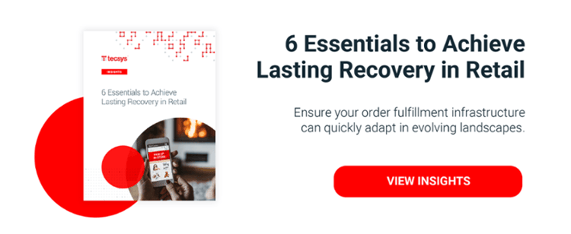Should You Use A Retail Ship-from-Store Strategy To Fulfill Online Orders?

Should online orders be fulfilled using a retail ship-from-store strategy or rather from fulfillment centers? That’s a very serious question facing retailers driving omnichannel today. There are good reasons for both fulfillment methods. Yet one better leverages a retailers’ full resource base.
It’s NOT – “All or Nothing!”
Too many people take extreme positions on this debate. Like most things in life, the extreme polarities aren’t necessarily the best solutions. So, even if your organization were to start a ship-from-store strategy, calm the troops in the DC. You are unlikely to ship every e-commerce order from the store. However, for the good of the business, you need to consider shipping from store. Today, most retailers are in 100% warehouse fulfillment mode.
The best example of a retailer pushing the boundaries of retail ship-from-store is Target in the US. George Anderson, Editor-in-Chief at Retailwire, points out that “One of the keys to Target’s performance was its ability to handle distribution for nearly 70 percent of its online orders through its stores.” Even the most intense retail ship-from-store program is not an all or nothing proposition.
Why Bother with Retail Ship-from-Store?
There are many business reasons for using a retail ship-from-store strategy. Certainly, most compelling is that it is an important step in an omnichannel retailing play. This is only significant when you realize that shoppers expect retailers to offer omnichannel capabilities. It is also compelling because it drives traffic, increases sales, and can improve a merchant’s margins.
Retail ship-from-store also:
- Puts inventory where customers buy (in the store)
- Reduces costs (shipping from a nearby store is less costly than from distant DC)
- Speeds delivery (nearby shipments are faster, or offer in-store pickup)
- De-risks fulfillment abilities (hurricanes, earthquake or blizzard hits main DC)
- Maximizes and leverages the expense of the physical stores
- Leverages your people assets (during slow periods)
- Engages the whole organization in omnichannel (breaks Silos)
- Distributes resource needs during holiday season
(hire a few people across your stores, rather than 5,000 people at the Smallville DC) - Lets you localize and personalize your fulfillment (local promotions, hand-written store note)
Related: Ship-From-Store Solution
Step Into Retail Ship-from-Store with Care
Retail ship-from-store is a great strategy. There are so many reasons why this makes sense. But, like all things, think before you leap. Better phrase, ‘plan before you execute’ your programs.
Carefully plan for the following:
- Out-of-Stock (OOS) situations won’t be tolerated by customers
- Watch your RSO ratio carefully
- Staff training (frequent, bite-size learnings, needs to be intuitive)
As you tread into retail ship-from-store, watch your OOS metrics like a hawk. You will probably have more inventory put into the stores and stock rooms, so your OOS metrics should decline (that’s a good thing). However, a much greater inventory turn may end up raising your OOS. Be aware of this and plan on how to handle it (fast DC backup plan, reprioritize ship-from-DC during peak season…).
Associated with OOS is the RSO metric. RSO is your Retail Ship:Order ratio. When shifting to a retail ship-from-store strategy, many retailers experience a dramatic increase in shipments. Most OMS systems will prioritize ship-from-store. Then they ship as much of the order from one store as possible and send the rest to other stores to fulfill. It often ends up as a tragi-commedy. There are too many stories about shoppers putting in one order and getting multiple boxes shipped to them (see cartoon below). It dramatically erodes margin, is environmentally wasteful, and depletes your brand in the eye of the customer. Please see the post on the new RSO metric, for more details.
Finally, on staff training – make sure you train and communicate frequently. It also means investing in an OMS that provides helpful and intuitive in-store applications. The application has to be able to accept or reroute an order – when resources are tied up with other customers. It also includes having a mobile application that gives you an effective pick pack list – to make retail ship-from-store easier.
Should You Use A Retail Ship-from-Store Strategy?
There are just too many good reasons that can truly benefit a retail chain – to ignore it. Naturally, there are growing pains, and learnings to deploying this new strategy. However, with some good planning and forethought, you can mitigate the challenges – to reap the rewards.
Ultimately, it is a balancing act. Most retailers will not shift completely to a retail ship-from-store strategy. Don’t set 100% as your objective. Rather, if it helps better leverage your assets, and improve your margin positions… then consider this option seriously. More importantly, get started!



